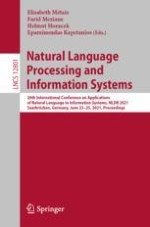2021 | OriginalPaper | Chapter
Cross-Domain Transfer of Generative Explanations Using Text-to-Text Models
Authors : Karl Fredrik Erliksson, Anders Arpteg, Mihhail Matskin, Amir H. Payberah
Published in: Natural Language Processing and Information Systems
Publisher: Springer International Publishing
Activate our intelligent search to find suitable subject content or patents.
Select sections of text to find matching patents with Artificial Intelligence. powered by
Select sections of text to find additional relevant content using AI-assisted search. powered by
